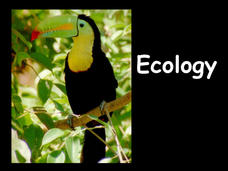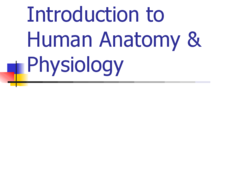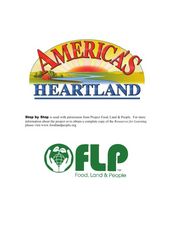Biology Junction
Ecology
Psychologists study human relationships while ecologist study relationships between organisms in the environment. An introduction to ecology and the related vocabulary benefits scholars as they progress through the presentation and...
iCivics
Step Four: Working with Websites
Almost every profession today relates to websites in some way! The resource tasks the class to fill out three individual graphic organizers to help them analyze each website they visit.
EngageNY
Planning the Introductory and Concluding Paragraphs of the End of Unit Assessment Essay
Preparation is the key to success! Using the guiding resource, scholars plan their end-of-unit analytical essays' introductory and concluding paragraphs based on their reading of Inside Out & Back Again. To prepare, they complete a...
EngageNY
Building Background Knowledge: “War in the Pacific,” Part 2
Who did what? Readers take a closer look at War in the Pacific to determine each country's actions. As they read, scholars underline American actions in one color and actions of Japan in another. They then begin completing Pearl Harbor...
EngageNY
Research Tasks: New Words, Relevant Information, Revision
Word builders. Scholars participate in a mini lesson about affixes. They then complete a research vocabulary organizer and share their definitions of the words with the class. They gather more evidence for their research from the...
Bonneville
Compost Bioreactor Design
Organic waste is a hot topic. The second of three installments in the Bioreactor Water Heating unit challenges pupils to create bioreactors that collect energy released from compost. After watching videos on the properties of water and...
Overcoming Obstacles
Writing Reports
Following a review of how to research and take notes, scholars define the term paraphrase and identify ways to organize information and finish reports. To put their newfound knowledge to the test, learners interview a peer, take notes,...
Curated OER
The Human Organism
Students identify their feelings and learn constructive ways of handling conflict. In this human mental health lesson, students identify their feelings, learn how to tell others about their feelings, and learn how to resolve conflict....
Curated OER
Organizing the Elements
Ninth graders examine the periodic table and discover why the elements in the table are organized the way they are through research. Students infer information about the elements and the relationships among them that leads to their...
Curated OER
Now You See Me, Now You Don't
Bioluminescence fascinates most upper elementary scientists. Display images of different glowing deep-sea organisms and discuss their environment. Young biologists then experiment with images and different colors of filtered light. In...
Curated OER
Graphic Organizing: Early American History
In collaborative groups, young US historians sort cards (each labeled with a single early American event or issue) according to which of the first four presidents was leading the country at the time. Learners copy the events onto a...
Curated OER
Unit 2: Lesson 8
Students login to their account and access information from keypals. They compare their data with information recieved by classmates. Students review question that were asked of keypals. They discuss ways that expected data can be...
Curated OER
Comparing and Contrasting
Analyze historical biographies. Young scholars compare and contrast the biographies of Susan B. Anthony and Pat Nixon. They construct graphic organizers, answer critical thinking questions, complete a formative assessment.
Curated OER
The Growth of the American Labor Movement
Explore the world of labor unions and organized strikes of the early 20th century in this presentation. With stark pictures of child laborers and striking workers, these slides are sure to leave an indelible impression on your students-...
Curated OER
Community Helpers
Kindergartners learn who community helpers are and what contributions they make for the community. They will hear a story outlining various community helpers, their jobs, and tools, create a graphic organizer connecting community...
Curated OER
Introduction to Human Anatomy & Physiology
If the only support you are in search of is lists of vocabulary terms, this presentation may fit the bill. Slides simply list terminology. These categories are included: hierarchy of structural organization, cell functions, cell...
Curated OER
Presentations Come Alive!
Partners create oral presentations about a short story or poem incorporating audiovisual aids. Then they make presentations to their classmates. Linked story map will help guide readers' organization of their presentation;...
Curated OER
Step-By-Step
For many emerging writers, essays are completed step-by-step. With the help of this lesson plan, learners will narrow down a topic, develop a thesis statement, develop a preliminary outline, conduct Internet research, and understand the...
Curated OER
Sorting
Students examine the concept of organization. In this library skills lesson plan, students practice ordering and sorting skills by playing the Flood Game.
Curated OER
Shapes, Patterns, and Plants
Students imagine they are animals in the Palace Facade painting. In this Palace Facade lesson plan, students observe and discuss the geometric and organic shapes in the painting shown to them.
Curated OER
Introduction to Animals
The details about invertebrates and invertebrates give valuable information about the characteristics of multicellular organisms. Examples of nutrition styles and symmetry are interesting. Also, these slides are clear in presenting a...
Curated OER
Shapes: Art or Geometry
Budding artists or mathematicians read about,and then draw, two very different shapes. Geometric and organic 2-D shapes are defined. Learners use the definitions to draw examples of each.
Curated OER
Name that animal
A great way to classify organisms, is by counting the number of legs it has or how it moves. Little ones count the legs on five different creatures, then match the leg count to the proper animal name. Tip: Have them come up with other...
Foundation for Water & Energy Education
How Can a Dam Affect a River? Activity A
Written for Washington state students in life science, this lesson provides an opportunity to examine the residents of local freshwater habitats. You or the class collects a water sample, and learners try to examine what organisms live...
Other popular searches
- Classifying Organisms
- Classification of Organisms
- Basic Needs of Organisms
- Aerobic Organisms
- Extinct Organisms
- Genetically Modified Organisms
- Freshwater Organisms
- Relationships Among Organisms
- Interdependence Organisms
- Extinction of Organisms
- Multicellular Organisms
- Organisms Interact

























